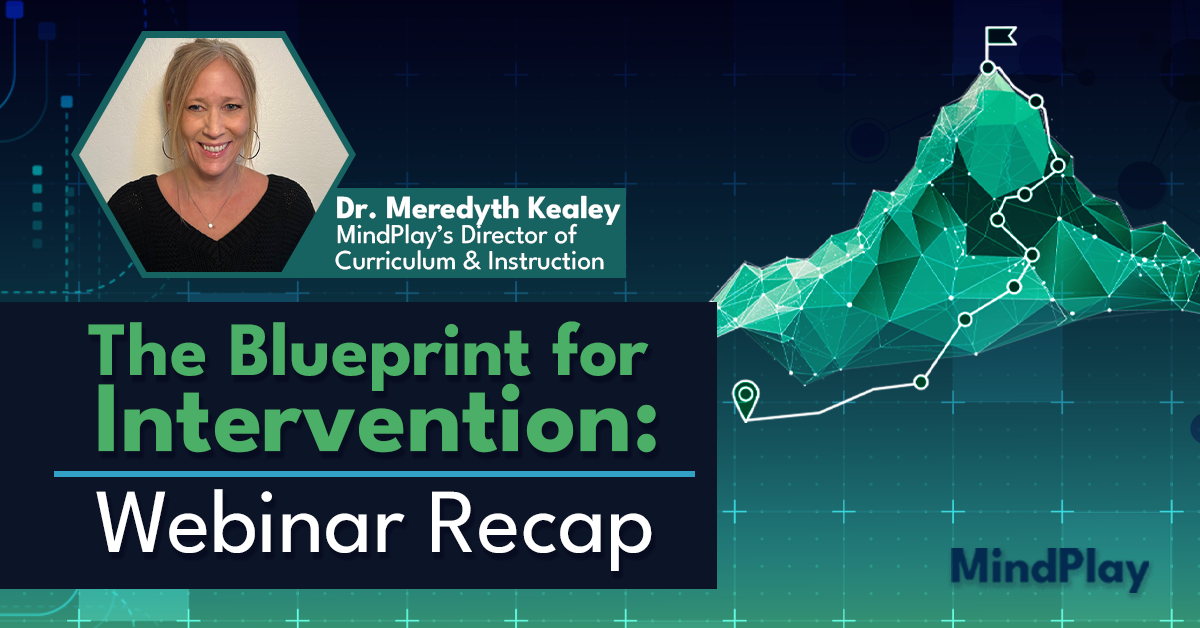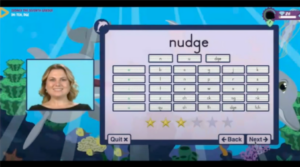In our recent webinar, “The Blueprint for Intervention,” the MindPlay team provided valuable insights for educators and administrators nationwide on how reading interventions can address diverse learning needs, enhance literacy outcomes, and support student growth in today’s classrooms.
The webinar focused on the importance of early intervention, individualized instruction, and effective strategies for building phonological awareness and phonics skills. Watch the replay:
📚 The Cost of Delayed Intervention
The webinar began with a sobering truth: the longer intervention is delayed, the harder it becomes for students to catch up — and the greater the impact on their motivation to read. The research is clear:
- “Children who fall behind in first grade reading have a one in eight chance of ever catching up to grade level.” – Juel, 1994
- “Phonemic awareness is the single best predictor of reading success between kindergarten and second grade.” – Adams & Stanovich, 1995
- “Systematic phonics instruction significantly improves children’s reading comprehension.” – National Reading Panel, 2000
Early intervention matters — and the webinar outlined practical strategies to help educators act quickly and effectively.
🎯 Individualized Instruction: Meeting Students Where They Are
A key focus of the webinar was the importance of individualized instruction. Every student learns differently, and effective intervention requires a tailored approach that addresses each student’s unique strengths and challenges, ensuring they receive the right support at the right time. MindPlay identified four essential components of individualized instruction:
- Pacing
- Content
- Instructional Methods
- Assessment
🍎 Students Struggling with Phonological Awareness & Phonics
Our experts explored the common characteristics of students struggling with phonological awareness and phonics — two foundational pillars of reading success.
Phonological awareness, the ability to recognize and manipulate sounds in spoken language, is essential for decoding words, connecting letters to sounds, recognizing patterns, and ultimately becoming independent readers. Typical characteristics of students struggling with phonological awareness include:
- Difficulty with rhyming
- Low RAN performance
- Trouble with acquisition, retention, and application of phonics skills
- Difficulty learning to read and spell
When it comes to phonics, the ability to correlate sounds with letters or groups of letters, the typical characteristics of struggling students include:
- Difficulty matching sounds to letters
- Often get stuck on words when reading
- Reading is slow/laborious
- Guessing at words
- Unable to recognize letter patterns when reading
Practical Application
Identifying the characteristics of students who may be struggling is just the start. Now, we leap into action. From sound blending (pushing sounds together) and segmentation exercises (pulling the sounds apart) to targeted phonics activities, the webinar also offered practical tools to help students overcome reading difficulties and build lasting literacy confidence.
Practicing Phonemic Awareness
Segmentation in MindPlay: In MindPlay, students needing additional practice with segmentation are given a series of on-screen practice sessions. In the activity shown below, a student pushes the circles upward for each sound. Immediate feedback is provided during each practice session, allowing students to instantly recognize errors, make corrections, and reinforce learning in real-time.

Other segmentation activities referenced in the webinar:
- Elkonin Boxes (17:35) – Use a piece of paper with a series of boxes. As students sound out a word, they move a small item (e.g., candy, a penny) into each box, representing each sound.
- Picture Cards (17:47) – Provide students with a flashcard featuring a word and a corresponding image (e.g., “frog”). As they trace their finger along the letters, they simultaneously sound out the word, reinforcing letter-sound connections and phonemic awareness.
Practicing Phonics
The team also provided this free guide to systematic sequence for phonics instruction (showing a list of skills, ordered from simple to complex). Whether you currently have a phonics program or not, this guide helps you answer the “now what” question that inevitably results from targeted interventions pinpointing a student’s area(s) of need.
Building Words Activity in MindPlay: On-screen, speech-language pathologists dictate a word that students then attempt to spell by isolating the sounds they hear. Click the image below to see a live demo of how this works.
Additional activities to strengthen phonics skills:
- Spelling Rules Race (25:10) – Give your students a spelling rule (example: “I” before “E,” except after “C”) with a corresponding list of words. Have your students race to sort which words follow the rule and which ones don’t. A great way for them to learn and talk through the rules together!
- Rule Detective (26:06) – Give your students a list of words (ex., with past tense “ed” or double-consonants) and have them work in groups to figure out what they think the spelling rule is. This helps you understand their reasoning and observe how they recognize and apply patterns.
- Free Worksheet: Making Words Activity »
The webinar ended with a deeper look at our educator dashboard in MindPlay Reading Studio, showing guests how MindPlay makes it easy to see:
- A student’s foundational skills profile, showing a high-level understanding of a student’s strengths and weaknesses;
- Overall progress, with information about the concepts the Reading Studio has assessed and flagged;
- How error analysis and feedback are provided to the educator so next steps can be appropriately set.
Ultimately, the name of the game is matching needs with appropriate instruction. Implementing a learning system like MindPlay, one that was built specifically for reading intervention, is the most efficient way to ensure that your students are receiving the individualization likely to yield measurable growth.
If you’re interested in learning more about how MindPlay Reading Studio can benefit your school, district, or summer school programming, please reach out to us here.


